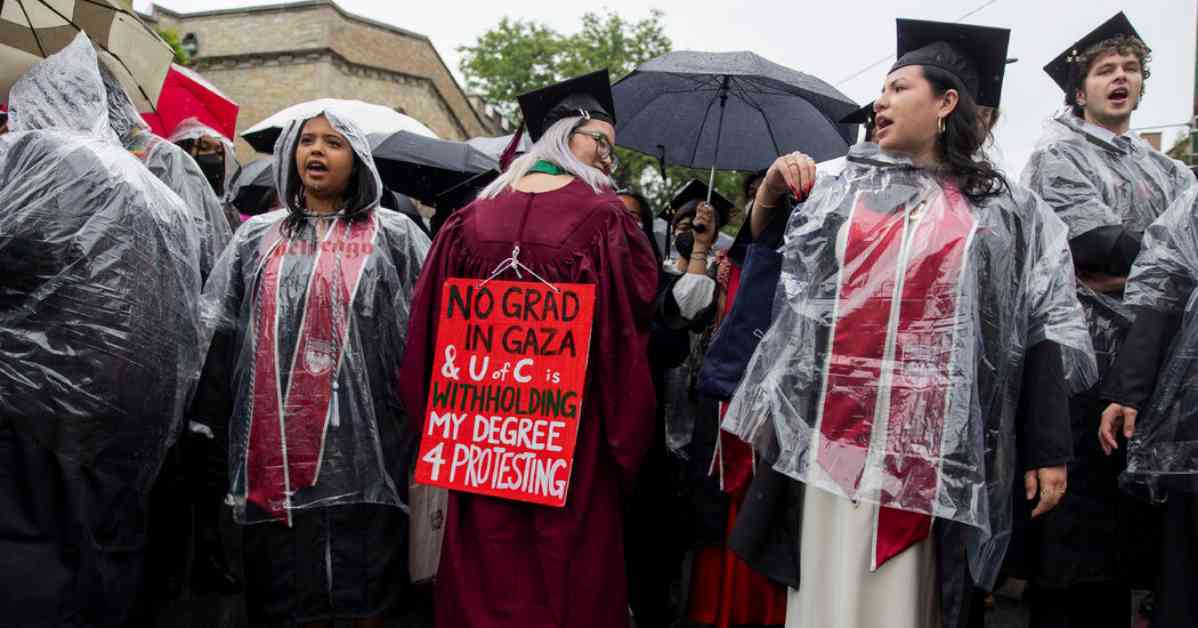The Cost of Student Protest: Evaluating Charges for Activism
Student activism has long been a prominent feature of university campuses, with students taking a stand on a variety of social and political issues throughout history. However, as the landscape of activism evolves, so do the consequences that students may face for their actions. In recent years, a new wave of student protesters has emerged, demanding that charges against them be dropped, both academically and legally. This has sparked a heated debate within academia about the appropriate response to student activism and the line between free speech and disciplinary action.
The Case of Youssef Hasweh
Youssef Hasweh, a college senior at the University of Chicago, found himself at the center of this debate when he was informed that his degree would not be conferred due to his participation in a protest encampment on campus. Hasweh, who had been involved in previous protests on campus, was no stranger to disciplinary actions from the university. However, the decision to withhold his degree raised questions about the extent to which universities should penalize students for their activism.
Hasweh’s case is not unique. Across the country, students involved in protests have faced similar disciplinary actions, ranging from warnings on their records to suspensions and expulsions. Many of these students argue that their actions were a form of free speech and that they should not be punished for exercising their rights to protest. On the other hand, universities are tasked with maintaining order on campus and upholding their codes of conduct, which may prohibit certain forms of protest.
The Role of Universities in Addressing Student Activism
The question of how universities should respond to student activism is a complex one. On one hand, universities have a responsibility to protect the safety and well-being of their students, faculty, and staff. This includes enforcing rules and regulations that govern behavior on campus. However, universities also have a long history of supporting student activism and providing a platform for students to engage in political discourse.
For many students, activism is not just a form of protest, but a way to effect change and address social injustices. In recent years, students have organized protests on a wide range of issues, from racial inequality to climate change. These protests have often been met with resistance from university administrations, leading to conflicts over the boundaries of free speech and the right to protest.
The Impact of Disciplinary Actions on Student Activists
The consequences of disciplinary actions against student activists can be far-reaching. In addition to potential academic penalties, such as suspensions or expulsions, students may also face legal repercussions for their actions. Criminal charges, such as trespassing, can have serious implications for a student’s future, including their ability to secure employment or attend graduate school.
Moreover, the emotional toll of facing disciplinary actions can be significant. Many student activists report feeling isolated and marginalized by their universities, which may lead to feelings of disillusionment and mistrust. For students like Youssef Hasweh, who had dedicated their time and energy to advocating for social change, the prospect of being punished for their activism can be particularly disheartening.
Moving Forward: Finding a Balance
As universities grapple with the challenges of addressing student activism, it is essential to find a balance between upholding rules and regulations and supporting free speech. One approach is to engage in dialogue with student activists to better understand their motivations and goals. By listening to students’ concerns and working together to find common ground, universities can create a more inclusive and supportive environment for activism.
Additionally, universities can review their disciplinary policies to ensure that they are fair and transparent. Clear guidelines for addressing student protests can help prevent misunderstandings and conflicts between students and administrations. By establishing a framework that respects students’ rights to protest while also maintaining order on campus, universities can navigate the complexities of student activism more effectively.
In Conclusion
The cost of student protest is a multifaceted issue that requires careful consideration and thoughtful dialogue. As universities continue to grapple with the challenges of addressing student activism, it is essential to prioritize the rights and well-being of students while also upholding rules and regulations. By finding a balance between these competing interests, universities can create a more inclusive and supportive environment for activism, where students can engage in political discourse and advocate for social change without fear of reprisal.
